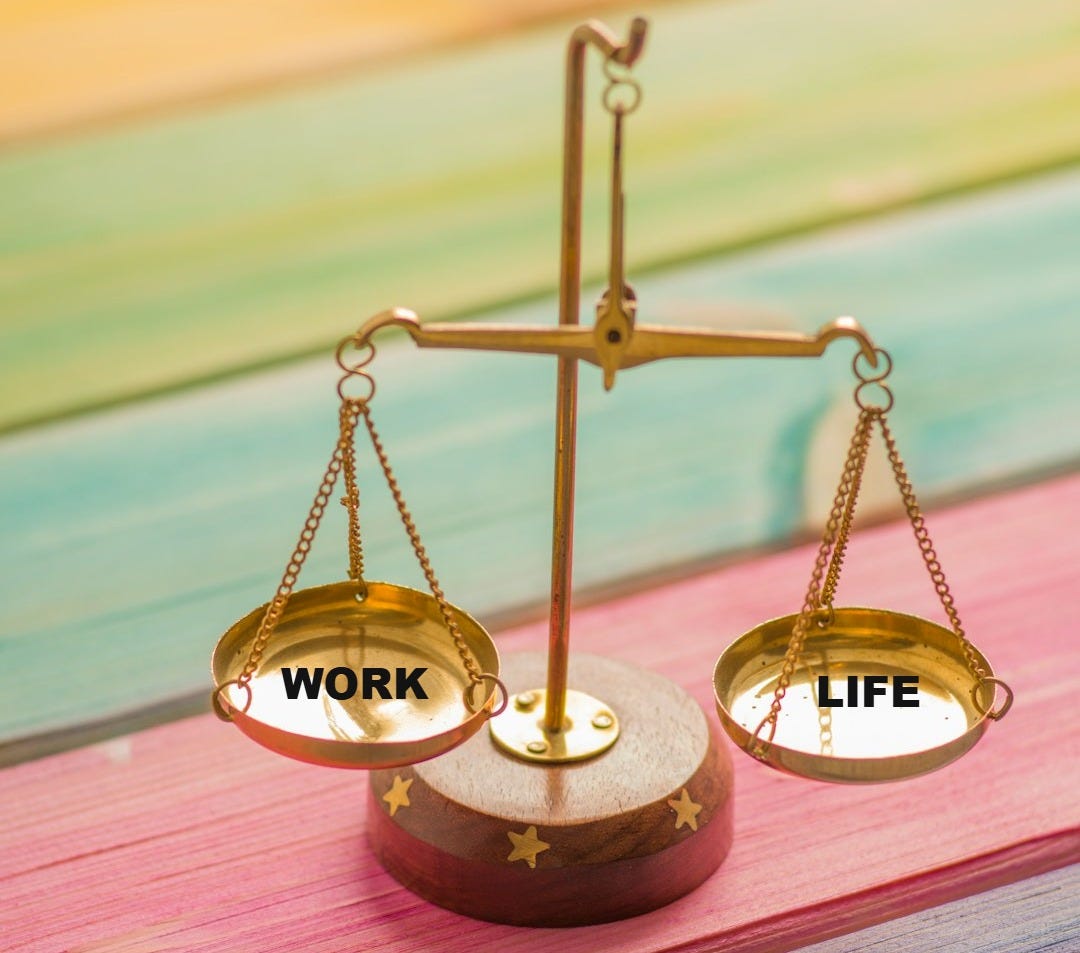Work-Life Balance Is a Lie
Here’s What Actually Works
I’m going to show you how to achieve a true work-life balance without sacrificing your success.
First,
Did you know you’re not burned out because you work too much?
You’re burned out because you’re working without purpose.
I will explain.
But that’s the painful truth most of us avoid.
We chase balance as if it’s a goal—but it’s really a skill. And most people never learn how to master it.
Why This Matters
When you achieve work-life balance, your stress decreases, your productivity soars, and—most importantly—you start living a life that feels truly aligned with your values.
But here’s the kicker: most people think balance is about cutting back. In reality, it’s about knowing what to cut out and what to double down on.
If you’re constantly overwhelmed or feel like you’re just going through the motions, it’s not because balance is impossible—it’s because you’re approaching it the wrong way.
The Reason Most People Struggle
Here’s where things fall apart for most people:
They confuse activity with progress. Saying “yes” to everything doesn’t mean you’re succeeding—it just means you’re busy.
They don’t know their priorities. You can’t balance your life if you don’t know what’s most important.
They set unrealistic goals. Balance doesn’t mean splitting your time 50/50—it means aligning your actions with your values.
They don’t create systems. Without systems, you rely on willpower. And willpower always runs out.
Here’s the good news: these are all solvable problems. I’m going to show you exactly how to create work-life balance—step by step.
Here’s How to Achieve Work-Life Balance, Step by Step
Step 1: Define Your Non-Negotiables
Balance starts with clarity. Write down your top three priorities—what actually matters most in your life.
Why this is critical: If you don’t know your non-negotiables, you’ll spend your life chasing what everyone else values instead of what matters to you.
Quick example: Back in school, I was always overwhelmed with responsibilities and tasks from home too. The game changer? Defining my top priorities: family, health, and impactful work. Once I focused on these, everything else fell into place.
Step 2: Audit Your Time Like a CFO
Track how you’re spending your time for one week. You’ll quickly see where balance is slipping through the cracks.
Common mistake: Most people think they don’t have time for balance. The truth? They’re spending hours on low-value tasks.
Pro tip: For one week, log every 15 minutes of your day. You’ll discover your hidden time-wasters—and you’ll be shocked at how much time you can reclaim.
Step 3: Build Systems, Not Resolutions
Balance isn’t about working harder; it’s about working smarter. Use tools and routines to automate decisions and protect your priorities.
What this ladders up to: When your systems handle the small stuff, you have the bandwidth to focus on what truly matters.
Example: I batch my writing into three focused hours each week. No distractions, no multitasking. This system has saved me over 10 hours a week—and drastically reduced my stress.
Final Thoughts
Balance isn’t a destination; it’s a set of habits. And those habits come down to knowing your priorities, protecting your time, and building systems to support your goals.
Most people never achieve true work-life balance—not because it’s impossible, but because they’re stuck following advice that doesn’t work.
The solution is simpler than you think.
You just need to start.
Your Turn
Balance isn’t something you find—it’s something you build.
And building it starts with self-awareness.
So…uhhmm…
Your Question: What’s one thing you’d prioritize more today if you had a better work-life balance?
Drop your thoughts in the comments—I’d love to hear your perspective.
And if you want more strategies like this, subscribe to my newsletter if you have not for more actionable insights.
You might also like:
Your Next Move won't happen-you create it
Philip's Pages dissect the issues around Career Paths and living securely and stably. Subscribe so you don’t miss the next post!




